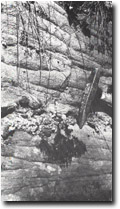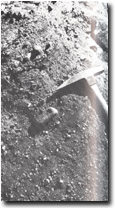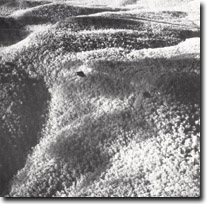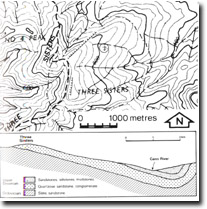8723-3 The Sisters
|
This information has been developed from the publications:
|
Location: | 85463. Eight kilometres north-east of Combienbar |  Conglomerates and sandstone at The Three Sisters. |
Abstract: | Exposures of Upper Devonian sediments. | |
Access: | The Three Sisters Track. | |
Ownership: | Crown Land. | |
Geology: | The Three Sisters are an outcrop of Upper Devonian Cann River Beds. These sedimentary rocks are preserved in a garben structure, which is bounded by the Buldah Fault in the east, and by unnamed fault to the northwest. Fault movements along the eastern and western edges of the graben have influenced the strike of the sediments and increased the dips by drag effects. These movements have resulted in an asymmetrically synclinal structure within the fault trough. The affect of the boundary fault along the western edge of the Cann River decreases towards the south until, at the Three Sisters, the contact between the Ordovician and Devonian sediments appears to be an unconformable, rather than faulted relationship. Conglomerates, pebbly sandstones and medium to fine-grained sandstones are exposed in cliffs between 30 and 40 metres in height at the Three Sisters. The clasts of the conglomerates and predominantly of well rounded quartz and sub-rounded to sub-angular quartzite, sandstone and slate. Differential erosion of the finer sandstones has highlighted the conglomerate clasts in the sediments and produced substantial overhangs on the cliff face in several areas, and small solution caverns at the cliff block wasting of prominent overhangs | |
Significance: | Regional. The Three Sisters escarpments provide the best exposure of the lower beds of the Devonian Cann River sedimentary sequence. | |
Management: | The significance of the site is dependent upon the maintenance of the Three Sisters escarpment. Land use which would alter the physical configuration of this feature should be avoided. | |
References: | Spencer- Jones (1967) | |
 Conglomerates and sandstone at The Three Sisters. |  The Three Sisters. Upper Devonian sediments forming escarpment (arrowed), on western limb of syncline. |



